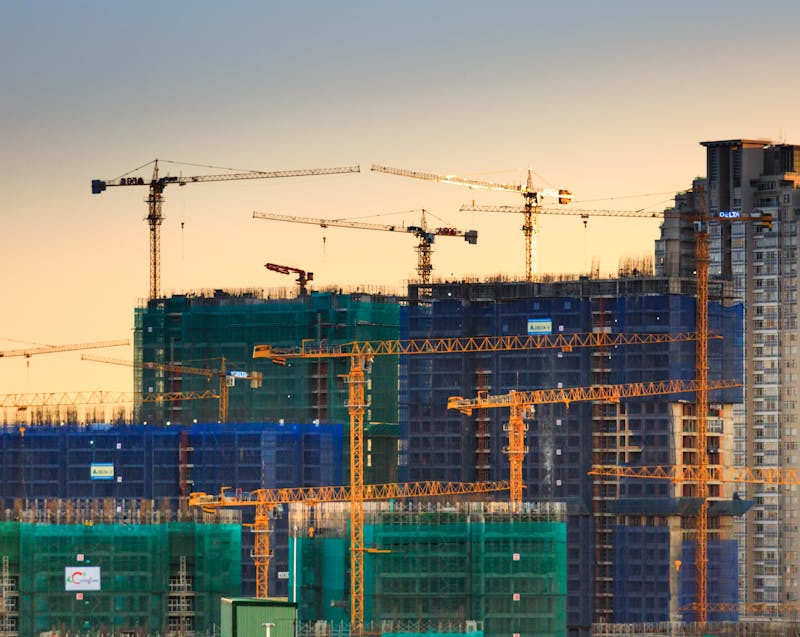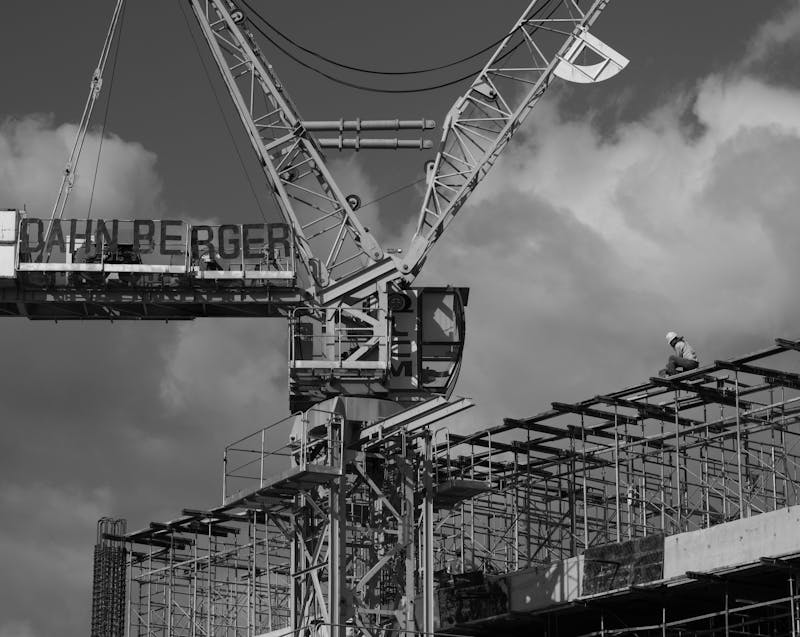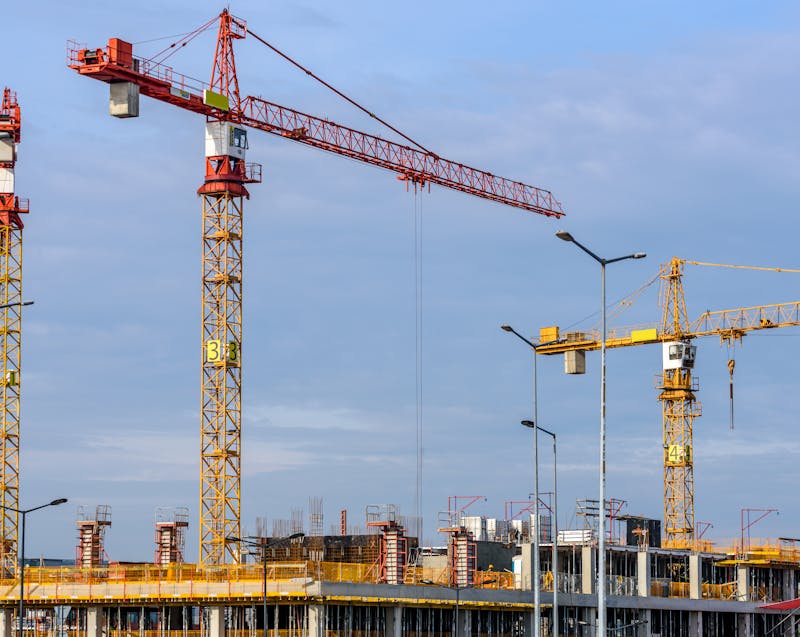- Selecting the right crane depends on multiple factors—such as load capacity, lift height, site conditions, and project duration—not just cost.
- Understanding the different types of cranes (tower, mobile, crawler, overhead, and floating) helps ensure the right match for each construction need.
- Partnering with a professional from a crane company ensures safety, regulatory compliance, and access to certified operators and well-maintained equipment.
- Site assessments, detailed lift plans, and effective team communication are crucial for safe and efficient crane operations.
- Avoiding common mistakes—like underestimating loads or neglecting terrain conditions—prevents accidents and costly project delays.
- Modern innovations, such as smart cranes and eco-friendly power systems, are transforming the industry for safer and more sustainable operations.
- The right crane choice is an investment in your project’s safety, efficiency, and long-term success.
Every successful construction project relies on the right tools, equipment, and expertise—and cranes are no exception. Choosing the right crane from a reputable crane company can make a dramatic difference in your project’s efficiency, safety, and overall cost. Whether you’re lifting heavy materials for a high-rise building or maneuvering prefabricated components on a compact urban site, the right crane determines how smoothly your operations will run.
Yet, many contractors and project managers make the mistake of choosing a crane based solely on its lifting capacity or cost. In reality, factors like terrain, reach, site accessibility, and project duration all play critical roles. This guide breaks down everything you need to know about choosing the right crane for your construction project, from understanding different crane types to evaluating site conditions and working with professional crane services.
Understanding the Basics: What Is a Crane?
A crane is a powerful machine designed to lift, move, and lower heavy loads with precision. It uses a combination of pulleys, hoists, and counterweights to handle tasks that would be impossible for manual labor alone. Cranes come in various shapes, sizes, and configurations—each engineered to handle specific job types and environments.
At its core, a crane consists of the following components:
- Boom: The long arm that extends to lift and move materials.
- Jib: A smaller extension attached to the boom for added reach.
- Hoist: The system that lifts and lowers the load.
- Counterweights: Provide balance and stability during lifting operations.
- Operator Cabin: Where the crane operator controls the equipment.
Cranes can be broadly categorized as either fixed (stationary on a foundation, like tower cranes) or mobile (mounted on wheels or tracks). Knowing which type suits your project is the first step toward making an informed decision.
Types of Cranes and Their Common Uses

Choosing the right crane starts with understanding the different types available and their specific applications. Here are some of the most common cranes used in construction and related industries.
1. Tower Cranes
Tower cranes are the giants of the construction world. They’re most commonly used in the construction of skyscrapers, bridges, and other tall structures.
- Advantages:
- Extremely high lifting height and reach.
- Capable of rotating 360 degrees for full coverage of the job site.
- Ideal for long-term, large-scale projects.
- Limitations:
- Fixed position—requires assembly and disassembly on-site.
- Higher installation and transportation costs.
2. Mobile Cranes
Mobile cranes are highly versatile and can easily move between job sites. These cranes come in several types, including truck-mounted, all-terrain, and rough-terrain cranes.
- Advantages:
- Quick setup and easy mobility.
- Suitable for projects in multiple locations.
- Can handle moderate to heavy loads.
- Limitations:
- Limited lifting height compared to tower cranes.
- May require stable ground conditions for safe operation.
3. Crawler Cranes
Crawler cranes are mounted on tracks instead of wheels, giving them excellent stability on uneven or soft ground.
- Advantages:
- Exceptional load capacity for large-scale industrial projects.
- No need for outriggers—tracks provide inherent stability.
- Suitable for heavy lifting in challenging terrain.
- Limitations:
- Slow movement and expensive transportation.
- Not ideal for confined or urban job sites.
4. Overhead (Bridge) Cranes
These cranes are primarily used in industrial environments such as factories, warehouses, and shipyards.
- Advantages:
- Ideal for repetitive, precise lifting tasks indoors.
- Efficient for moving materials across fixed routes.
- Limitations:
- Fixed installation—cannot be easily relocated.
- Limited to indoor or specialized facilities.
5. Floating (Marine) Cranes
Floating cranes are used for marine construction projects, such as bridge building, port maintenance, and offshore installations.
- Advantages:
- Designed for lifting heavy loads over water.
- Crucial for shipbuilding and offshore operations.
- Limitations:
- Restricted to marine environments.
- Requires specialized operators and maintenance.
Key Factors to Consider When Choosing a Crane
Selecting the right crane isn’t just about the machine itself—it’s about matching the equipment to the unique demands of your project.
1. Project Requirements
Start by assessing your project’s scope and specific needs:
- Load Weight and Size: Determine the heaviest object that needs lifting.
- Lift Height and Radius: Understand how far and high the crane must reach.
- Material Type: Fragile, long, or irregular materials may require special attachments.
- Frequency of Use: Decide if the crane will be used daily or occasionally.
A professional from a crane company can help evaluate these details to ensure you get the best fit for your project’s demands.
2. Site Conditions and Accessibility
The environment plays a huge role in crane selection. Evaluate your site carefully:
- Terrain Type: Uneven or muddy surfaces may require crawler or rough-terrain cranes.
- Space Constraints: Tight urban spaces might benefit from compact mobile cranes or mini tower cranes.
- Setup Area: Ensure there’s enough room for assembly and counterweight installation.
- Ground Stability: Cranes exert high ground pressure—soil testing may be necessary.
3. Load Capacity and Boom Length
Load charts are essential tools for selecting cranes safely. These charts show how much weight a crane can lift at varying boom lengths and radii.
- Always consult the manufacturer’s load chart before operation.
- Factor in wind, lift angles, and the type of rigging used.
- Never exceed 75–85% of the crane’s maximum rated capacity for safety.
4. Duration of Use
The project timeline affects whether renting, leasing, or purchasing is more practical.
- Short-Term Projects: Renting from a reliable crane company offers flexibility and reduced maintenance costs.
- Long-Term Projects: Leasing or purchasing might be more cost-effective in the long run.
5. Budget and Cost Efficiency
Crane costs go beyond the rental fee. Consider:
- Transportation and mobilization fees.
- Operator wages and crew coordination.
- Fuel, maintenance, and inspection costs.
- Insurance and liability coverage.
Obtaining quotes from a few crane service providers can help compare total project costs and find the best value.
6. Safety and Compliance
Safety should always come first. Make sure:
- All cranes comply with local and national safety standards.
- Operators are properly licensed and trained.
- Regular inspections and maintenance are conducted.
- Lift plans are reviewed by qualified engineers.
Working with a certified crane company ensures your lifting operations meet all safety and regulatory requirements.
The Value of Partnering with a Professional Crane Service Provider
Hiring a professional crane service is often the best decision a contractor can make. Experienced providers offer:
- Expert Guidance: They can assess your project needs and recommend the most suitable crane model.
- Certified Operators: Skilled professionals ensure safe and efficient lifting operations.
- Equipment Maintenance: Reliable crane companies maintain their fleets to prevent breakdowns.
- Insurance Coverage: Protects against accidents or equipment damage.
- Cost Predictability: Clear pricing helps manage budgets effectively.
Collaborating with an experienced team from a crane company minimizes risks, reduces delays, and ensures smooth operations from start to finish.
How to Plan for a Successful Crane Operation

Once you’ve chosen the right crane, proper planning ensures a safe and productive lifting process.
1. Conduct a Site Assessment
Before crane mobilization:
- Inspect the terrain for stability and obstructions.
- Verify access routes for trucks and heavy equipment.
- Identify power lines, overhead structures, or underground utilities.
- Ensure the ground can support the crane’s weight and counterweights.
2. Create a Detailed Lift Plan
A lift plan outlines every detail of a lifting operation, including:
- Load weight, dimensions, and center of gravity.
- Crane setup location and movement path.
- Weather conditions and potential hazards.
- Communication signals between team members.
3. Prioritize Communication and Coordination
Successful crane operations rely on strong teamwork.
- Designate a qualified signal person to guide the operator.
- Use radios or communication headsets for real-time coordination.
- Hold daily safety briefings to review procedures and potential hazards.
4. Monitor Weather and Environmental Conditions
Adverse weather can quickly compromise crane safety.
- High winds can sway the boom or load.
- Rain and ice reduce traction and stability.
- Always follow manufacturer-recommended wind and weather limits.
Common Mistakes to Avoid When Selecting a Crane
Even experienced contractors can make errors that lead to costly delays or safety issues. Avoid these common mistakes:
- Underestimating Load Requirements: Selecting a crane that cannot handle the actual weight or reach.
- Ignoring Terrain Conditions: Using the wrong crane for uneven or soft ground.
- Neglecting Permits: Failing to obtain proper lifting or road closure permits.
- Skipping Inspections: Overlooking daily checks or scheduled maintenance.
- Hiring Inexperienced Operators: Lack of proper training increases risk of accidents.
Working closely with an established crane company helps you avoid these pitfalls and ensures a professional approach to every project.
Emerging Trends and Innovations in Crane Technology
The crane industry continues to evolve, incorporating modern technologies that enhance safety, sustainability, and productivity.
1. Smart and Automated Cranes
Modern cranes are equipped with telematics, sensors, and real-time monitoring systems. These features allow operators and managers to track performance, load data, and safety conditions remotely.
2. Eco-Friendly Power Systems
With the push toward sustainability, manufacturers are developing electric and hybrid-powered cranes that reduce emissions and fuel consumption—ideal for environmentally conscious projects.
3. Advanced Safety Systems
Features like anti-collision sensors, load moment indicators, and stability control systems help prevent accidents and improve operational efficiency.
4. Remote Operation Technology
Remote-controlled cranes allow operators to manage lifts from a safe distance, reducing on-site risk during hazardous operations.
5. Predictive Maintenance
Using data analytics and AI, modern cranes can predict potential component failures before they occur, minimizing downtime and repair costs.
Conclusion: Making the Right Choice for Project Success
Selecting the right crane for your construction project requires more than just looking at lifting capacity or rental price. It involves a careful analysis of project needs, site conditions, safety requirements, and operational efficiency.
By working with a trusted crane company, contractors can ensure they’re using the right equipment for every situation—whether that means a mobile crane for a flexible job site or a tower crane for a long-term build. The right decision not only enhances productivity but also ensures safety, compliance, and cost-effectiveness.
In the end, choosing the right crane is an investment in your project’s success. Careful planning, professional expertise, and reliable equipment will always lift your project—literally and figuratively—to greater heights.
